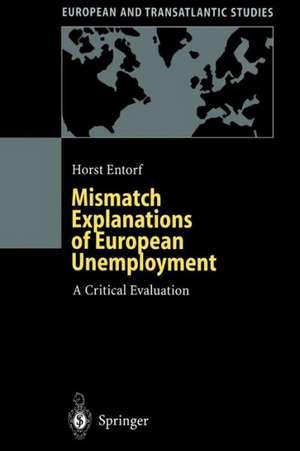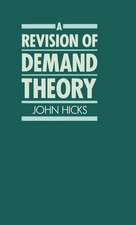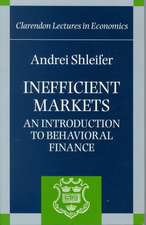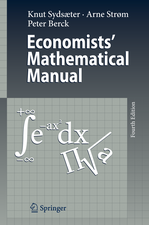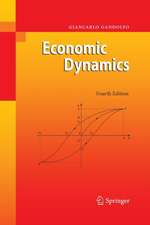Mismatch Explanations of European Unemployment: A Critical Evaluation: European and Transatlantic Studies
Autor Horst Entorf Editat de Michele Fratiannien Limba Engleză Paperback – 13 oct 2012
| Toate formatele și edițiile | Preț | Express |
|---|---|---|
| Paperback (1) | 383.93 lei 6-8 săpt. | |
| Springer Berlin, Heidelberg – 13 oct 2012 | 383.93 lei 6-8 săpt. | |
| Hardback (1) | 643.00 lei 6-8 săpt. | |
| Springer Verlag – 15 apr 1998 | 643.00 lei 6-8 săpt. |
Preț: 383.93 lei
Nou
Puncte Express: 576
Preț estimativ în valută:
73.46€ • 76.71$ • 60.66£
73.46€ • 76.71$ • 60.66£
Carte tipărită la comandă
Livrare economică 15-29 aprilie
Preluare comenzi: 021 569.72.76
Specificații
ISBN-13: 9783642637896
ISBN-10: 3642637892
Pagini: 224
Ilustrații: XI, 206 p.
Dimensiuni: 155 x 235 x 12 mm
Greutate: 0.32 kg
Ediția:Softcover reprint of the original 1st ed. 1998
Editura: Springer Berlin, Heidelberg
Colecția Springer
Seria European and Transatlantic Studies
Locul publicării:Berlin, Heidelberg, Germany
ISBN-10: 3642637892
Pagini: 224
Ilustrații: XI, 206 p.
Dimensiuni: 155 x 235 x 12 mm
Greutate: 0.32 kg
Ediția:Softcover reprint of the original 1st ed. 1998
Editura: Springer Berlin, Heidelberg
Colecția Springer
Seria European and Transatlantic Studies
Locul publicării:Berlin, Heidelberg, Germany
Public țintă
ResearchCuprins
1. Introduction.- 1.1. European Unemployment and the Mismatch Hypothesis.- 1.2. The Conceptual Framework followed in this Book.- 1.3. Overview and Results.- 2. Do Aggregate Measures of Mismatch Measure Mismatch? A Time Series Analysis of Existing Concepts.- 2.1. Introduction.- 2.2. Some Puzzling Evidence.- 2.3. Measuring Mismatch: Theoretical Foundations.- 2.4. Measurement Problems.- 2.5. Disaggregation and Unobserved Heterogeneity.- 2.6. Time Series Analysis.- 2.7. Testing for Unit Roots.- 2.8. On the Magnitude of Drifts in Macroeconomic Mismatch Time Series.- 2.9. Some Simulation Experiments.- 2.10. Concluding Remarks.- Appendix A2.- 3. Disaggregate Matching Functions, Spurious Mismatch and Occupational Reallocation in Germany.- 3.1. Introduction.- 3.2. Aggregate Matching Functions: Theoretical Framework.- 3.3. Aggregate Matching Functions in West Germany.- 3.4. Spurious Matching Functions.- 3.5. Disaggregate Matching Functions using a Panel of Occupational Groups.- 3.6. On Occupational Reallocation: Theoretical and Empirical Aspects.- 3.7. Understanding the Matching of Apprentices.- 3.8. Concluding Remarks.- Appendix A3.- 4. Matching and New Technologies: Does Unmeasured Ability Explain the Higher Wages of New-Technology Workers?.- 4.1. Introduction.- 4.2. Matching, Mobility, and Unmeasured Ability.- 4.3. The Micro Datasets: Presentation and Descriptive Analysis.- 4.4. Cross-Sectional Results.- 4.5. Wages and New Technologies: Evidence from Panel Data.- 4.6. Concluding Remarks.- Appendix A4.- 5. Conclusions.- 6. References.
Recenzii
"This well-documetned book gives intersting suggestions and provides a good synthesis of the mismatch theory, to whose development the author contributed. It will no doubt be useful to econometrists."
European Review
European Review
Caracteristici
Looking for the sources of European unemployment: Is the mismatch hypothesis valid? All the basics are explained in a simple, straightforward manner The reader is introduced into the theory of spurious mismatch trends
